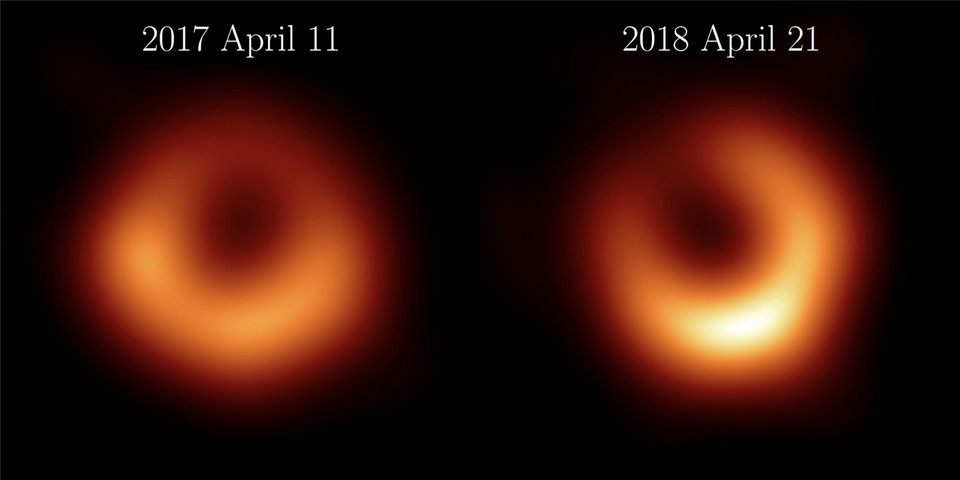This is what the black hole at the center of galaxy M87 looks like. (Image source: Event Horizon Telescope)
Nearly four years ago, the publication of the first images of a black hole caused a sensation. These were images of the core of a giant elliptical galaxy Messi 87
Which is located about 55 million light-years from Earth in the giant Virgo cluster.
These images are considered the first direct evidence of the existence of a black hole, although, strictly speaking, we only see its shadow. It is also considered evidence of the validity of Albert Einstein's theory of general relativity, which predicted black holes, and was correctly predicted by Karl Schwarzschild, who recognized it as a solution to the field equations in general relativity.
What does “Messier 87” mean?
The Messier Catalog is named after the French astronomer Charles Messier (1730 – 1817). It consists of 110 astronomical objects, most of which are galaxies, star clusters and nebulae. There are several such listings, including the new general catalogue, which is why M87 is also called NGC 4486.
What is the Virgo supergroup?
The Virgo Super Cluster is a collection of about 100 to 200 galaxy clusters, which also includes the Local Group including our own Milky Way Galaxy. It is between 150 and 200 million light-years across, and is itself part of the Laniakea supercluster.
A few weeks ago, new images of Messier 87's central black hole were published. They were actually recorded in 2018, but it took nearly six years to evaluate the petabytes of data. The photos prove once again that Albert Einstein's revolutionary theory is correct (trans Event horizon telescope).
How do images prove the validity of the theory of relativity?
According to scientists, the images show that the radius of the black hole with a mass of 6.5 billion solar masses, which is about 20 billion kilometers, has not changed compared to previous images. The images (see image below text) were taken in 2017, but were only published in 2019 after four years of analysis. doctor. Nitika Yadlapalli York, a postdoctoral researcher at JPL, explains it this way:
Since M87* is not accreting material rapidly (which would cause its mass to increase), general relativity tells us that its radius will remain more or less unchanged throughout human history. It is very exciting to see that our data confirm this prediction.
It was also shown that the brightest areas in the ring of matter surrounding the black hole moved within one year between the different images. This is also consistent with the researchers' prediction models:
Registrations from 2017 and 2018 are in direct comparison. The southern region (right of image) is noticeably brighter than in the previous image (left of image). (Image source: Event Horizon Telescope)
Why are pictures so important?
Until the first images were taken in 2017 and published in 2019, no one had ever seen a black hole. Until then, all evidence for its existence had come from indirect measurements.
For example, the merger of two black holes was based on the output Gravitational waves at the Laser Interferometer Gravitational-Wave Observatory, or LIGO for shortNote.
Previous studies focused on the effects of black holes on their surroundings. For example, the existence of a supermassive black hole at the center of our Milky Way Galaxy (called Sagittarius A*) could be suggested by the motion of stars around the carnivore.
How were the photos taken?
Both images were taken using the Event Horizon Telescope (EHT).. However, this is not a single telescope, but rather a combination of several radio telescopes around the world. This made it possible to create a virtual telescope the size of the Earth. The basic approach is called very long baseline interferometry (VLBI).
These are also not the last recordings made with the EHT. In addition to 2017 and 2018, there are also a series of measurements from 2021 and 2022, which have not yet been fully analysed. Further observations are also scheduled for the first half of 2024.
How can we even see images from a radio telescope?
In fact, the EHT did not take any images as we understand it, but collected data using radio astronomy. It was then translated into images that people could see in the complex process.
The following article talks about a completely different type of telescope and what it can do for us:
How do you like this? Are you impressed by the technical achievement of black hole imaging? Do you think this is one of the greatest astronomical developments of our time? And what to expect from new instruments like the James Webb Space Telescope linked above. Feel free to write it to us in the comments!

“Total coffee aficionado. Travel buff. Music ninja. Bacon nerd. Beeraholic.”










More Stories
Coral Seeding: Artificial Insemination Makes Coral More Heat Tolerant
Fear, Anger, and Denial: How People Respond to Climate Change – Research
LKH Graz: Using radiation to combat heart arrhythmias